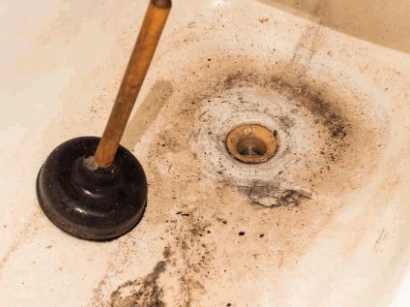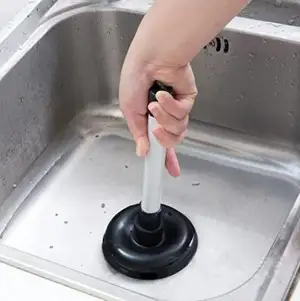Were you interested in information around How to Use a Plunger to Unclog a Toilet or Drain?

Intro
Appropriate maintenance of home drains is important for preventing clogs and making certain smooth water circulation. One of the key devices in every house owner's toolkit is the plunger, along with different drain cleansers created to tackle persistent clogs efficiently. This write-up checks out just how to utilize plungers and drainpipe cleansers effectively to keep your drains pipes moving freely.
Area 1: Understanding Bettors
Types of Plungers
There are several kinds of plungers readily available, each created for different sorts of drains and clogs. One of the most usual kinds include cup plungers, flange plungers, and accordion bettors.
Exactly How Plungers Job
Bettors work with the concept of creating pressure and suction to dislodge clogs. When correctly applied over a drain, they create a vacuum that can take out particles or separate obstructions.
Selecting the Right Plunger
Selecting the appropriate bettor depends upon the kind of drain and the nature of the obstruction. Mug bettors are optimal for sinks and tubs, while flange bettors are much better suited for commodes because of their layout.
Usual Errors with Plungers
Avoiding these mistakes makes certain reliable plunging: incorrect seal around the drain, not enough pressure, and not clearing bordering particles.
Section 2: Making Use Of Plungers Efficiently
Preparation
Prior to diving, guarantee the plunger covers the drain totally and creates a tight seal. Clear any type of visible debris around the drainpipe opening.
Strategy
Begin with gentle plunging motions to construct suction. Increase stress slowly, using a constant rhythm. Repeat as necessary until the drain clears.
Troubleshooting Tips
If plunging does not function, attempt readjusting the seal, using petroleum jelly for a much better seal, or using a different sort of bettor.
Area 3: Comprehending Drain Cleaning Company
Sorts Of Drain Cleaners
Drain pipes cleansers can be chemical or enzymatic. Chemical cleansers utilize strong chemicals to liquify clogs, while chemical cleaners use all-natural enzymes to break down organic matter.
Just How Drain Cleaning Company Work
Chemical cleansers react with obstructions to dissolve them, while enzymatic cleansers break down organic materials like hair and oil without damaging pipelines.
Security Considerations
Constantly put on gloves and eye security when utilizing chemical drain cleansers. Guarantee appropriate air flow and follow producer guidelines carefully.
Eco-Friendly Alternatives
Take into consideration making use of vinegar and cooking soda or enzyme-based cleaners for green options that are much safer for pipes and the environment.
Area 4: Using Drain Cleansers Properly
Application Techniques
Pour chemical cleaners directly into the drain opening. Enable them to help the suggested time prior to purging with hot water. Enzymatic cleaners ought to sit overnight.
Precautions
Avoid mixing various sorts of cleansers, as this can create hazardous fumes. Never use chemical cleansers combined with a bettor, as splashing can occur.
Taking Care Of Persistent Blockages
For persistent obstructions, think about using a pipes snake or calling a professional plumbing professional to avoid damage to pipelines.
Verdict
To conclude, understanding how to make use of plungers and drain cleansers successfully is vital for maintaining healthy and balanced plumbing systems. By choosing the right devices and techniques, home owners can take on small blockages and stop major pipes problems down the line.
How To Properly Use A Plumbing Snake To Clear Drains
When any drain clogs in our home arise, we tend to gravitate toward the plunger and little else. In cases where the plunger and its vacuum-created pressure are not able to clear clogs, many immediately move to harmful chemicals or simply call their plumber to fix the issue.
we’re happy to help with all drain cleaning needs and concerns. This includes informing you on a few other home remedies you may have at your disposal for minor to moderate clogs, one of which is the use of a plumbing snake. Many people have never used one of these before – let’s go over the steps to take when your drain clogs and you have a plumbing snake available.
Attempt Plunger Use
The first step here, as we noted above, should indeed be to grab your plunger when you notice a drain clog and attempt to resolve it this way. If you’re unsure how to use a particular type of plunger, our plumbers can answer any questions you have. If this doesn’t do the trick, however, you move on to the snake.
Locate And Prepare Snake
A plumbing snake is a metal or plastic device that’s generally about a quarter of an inch thick. It’s design with significant extensions, meant to reach down into your clogged drain and push the clog out. Snakes also contain drain augers that will latch onto and push stubborn blockages.
If your plunger doesn’t clear a clog, locate your snake and bring it to the drain in question. We also recommend keeping a bucket nearby to collect the clog once you pull it out, plus we’d advise wearing goggles and possibly protective gloves.
Feed Snake
Once you’re ready to go, feed the snake slowly down the drain, using the crank device it comes with to keep it moving until it finds the clog. Once this happens, much of the clog will be latched onto the coil so you can pull it out, while the rest will simply break up and flow downward.
Detach Debris
Remove the snake slowly from the drain, and once you’ve done so, pick off any debris that’s stuck to the coil. This is another area where wearing gloves is a must.
Flush Drain
Finally, take a few minutes to ensure the snake has done its job correctly. If you’ve been using it on a toilet, flush the toilet a couple times and make sure everything flows well. If you’ve used it on a different drain, flush it with some room temperature water.
https://www.mybuddytheplumber.com/blog/how-to-properly-use-a-plumbing-snake-to-clear-drains/

Application Techniques
Pour chemical cleaners directly into the drain opening. Enable them to help the suggested time prior to purging with hot water. Enzymatic cleaners ought to sit overnight.
Precautions
Avoid mixing various sorts of cleansers, as this can create hazardous fumes. Never use chemical cleansers combined with a bettor, as splashing can occur.
Taking Care Of Persistent Blockages
For persistent obstructions, think about using a pipes snake or calling a professional plumbing professional to avoid damage to pipelines.
Verdict
To conclude, understanding how to make use of plungers and drain cleansers successfully is vital for maintaining healthy and balanced plumbing systems. By choosing the right devices and techniques, home owners can take on small blockages and stop major pipes problems down the line.
How To Properly Use A Plumbing Snake To Clear Drains
When any drain clogs in our home arise, we tend to gravitate toward the plunger and little else. In cases where the plunger and its vacuum-created pressure are not able to clear clogs, many immediately move to harmful chemicals or simply call their plumber to fix the issue.
we’re happy to help with all drain cleaning needs and concerns. This includes informing you on a few other home remedies you may have at your disposal for minor to moderate clogs, one of which is the use of a plumbing snake. Many people have never used one of these before – let’s go over the steps to take when your drain clogs and you have a plumbing snake available.
Attempt Plunger Use
The first step here, as we noted above, should indeed be to grab your plunger when you notice a drain clog and attempt to resolve it this way. If you’re unsure how to use a particular type of plunger, our plumbers can answer any questions you have. If this doesn’t do the trick, however, you move on to the snake.
Locate And Prepare Snake
A plumbing snake is a metal or plastic device that’s generally about a quarter of an inch thick. It’s design with significant extensions, meant to reach down into your clogged drain and push the clog out. Snakes also contain drain augers that will latch onto and push stubborn blockages.
If your plunger doesn’t clear a clog, locate your snake and bring it to the drain in question. We also recommend keeping a bucket nearby to collect the clog once you pull it out, plus we’d advise wearing goggles and possibly protective gloves.
Feed Snake
Once you’re ready to go, feed the snake slowly down the drain, using the crank device it comes with to keep it moving until it finds the clog. Once this happens, much of the clog will be latched onto the coil so you can pull it out, while the rest will simply break up and flow downward.
Detach Debris
Remove the snake slowly from the drain, and once you’ve done so, pick off any debris that’s stuck to the coil. This is another area where wearing gloves is a must.
Flush Drain
Finally, take a few minutes to ensure the snake has done its job correctly. If you’ve been using it on a toilet, flush the toilet a couple times and make sure everything flows well. If you’ve used it on a different drain, flush it with some room temperature water.
https://www.mybuddytheplumber.com/blog/how-to-properly-use-a-plumbing-snake-to-clear-drains/

I'm certainly very involved in A Guide to Plungers (and How to Use Them) and I really hope you appreciated our post. Make sure you take the opportunity to share this entry if you enjoyed reading it. Thank you so much for going through it.
Free Quote